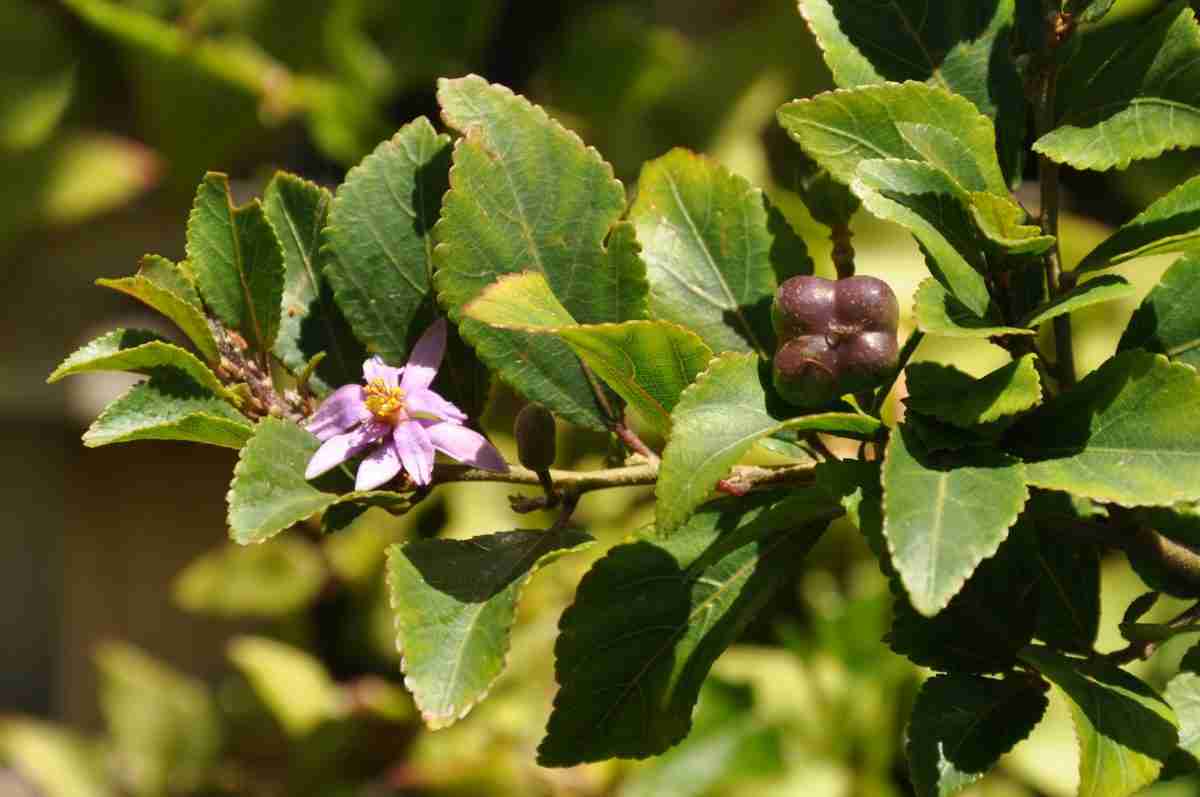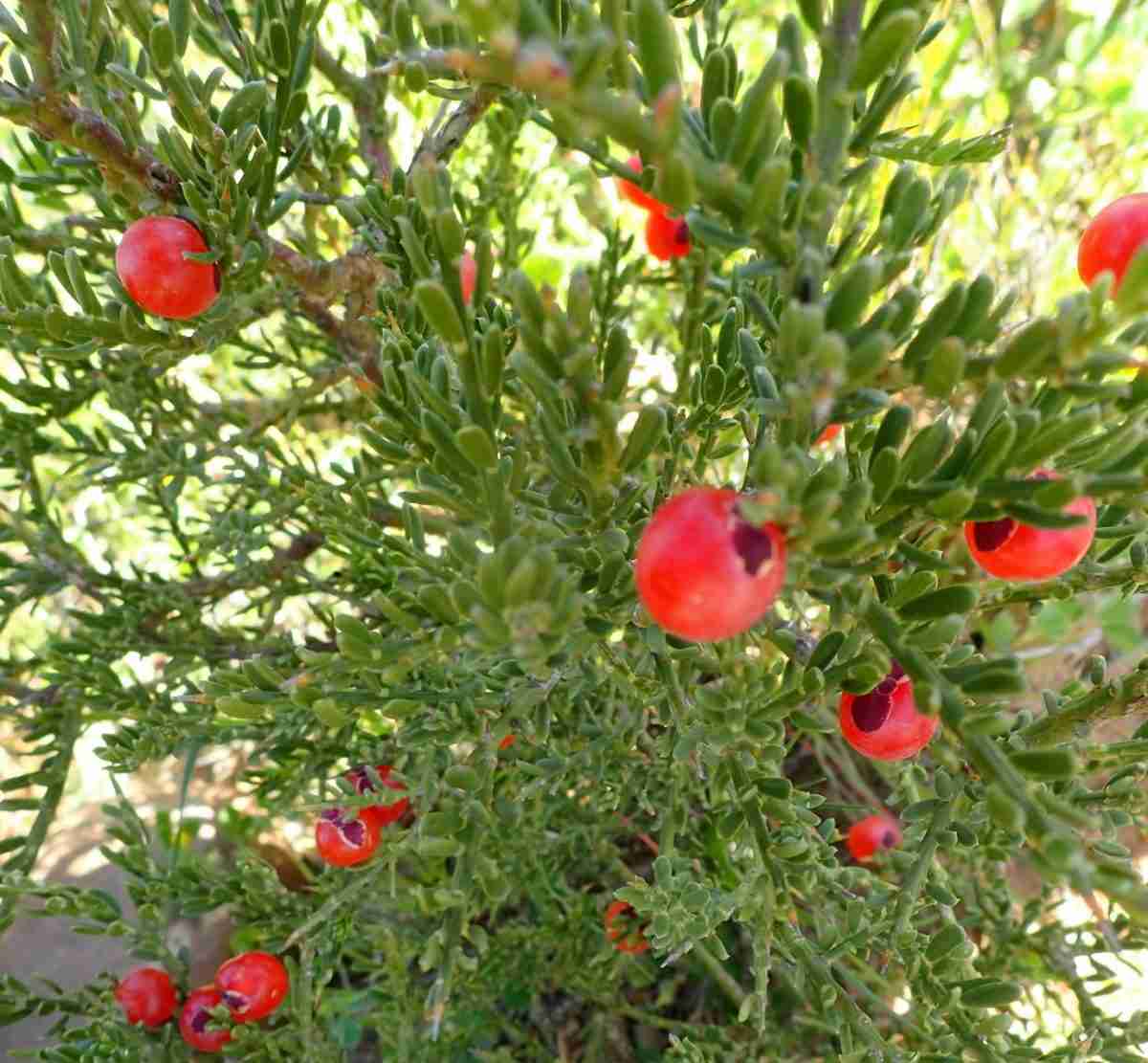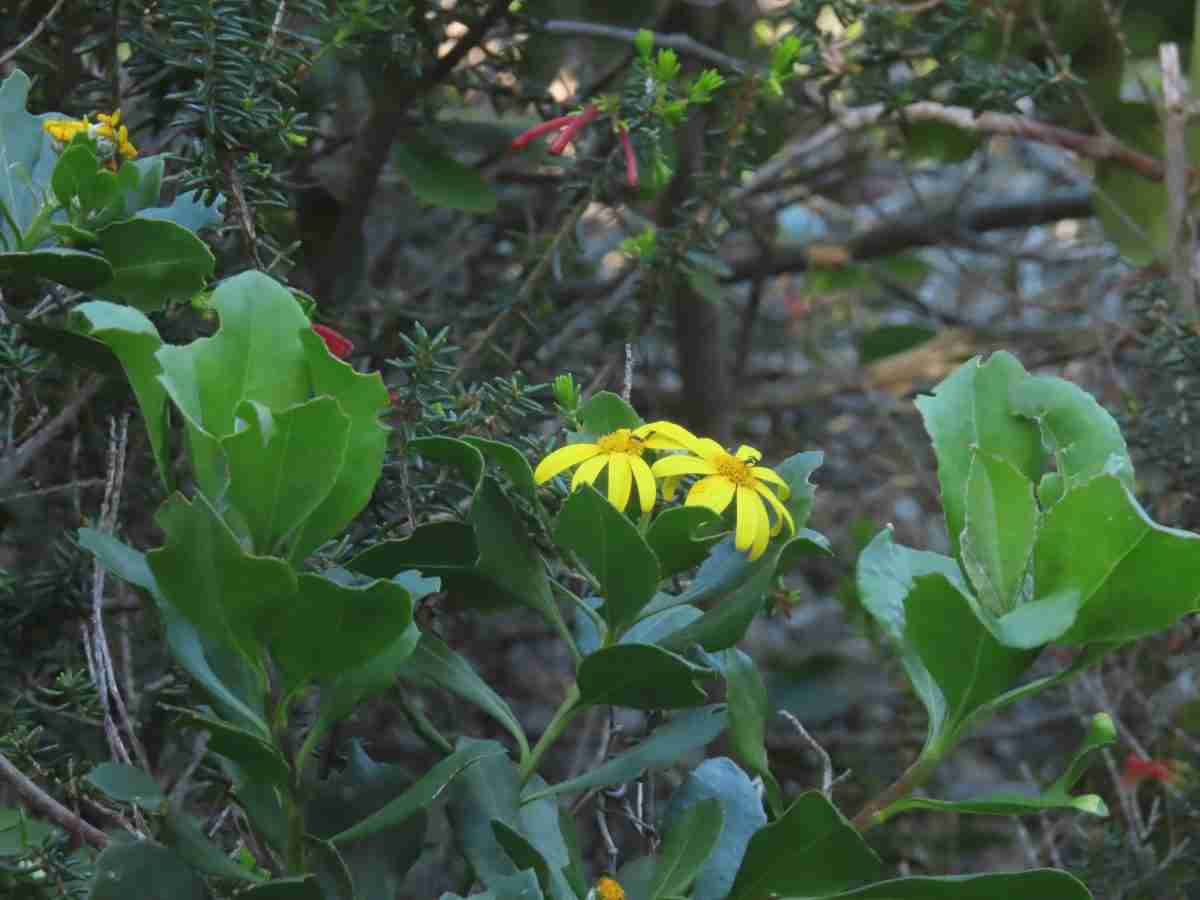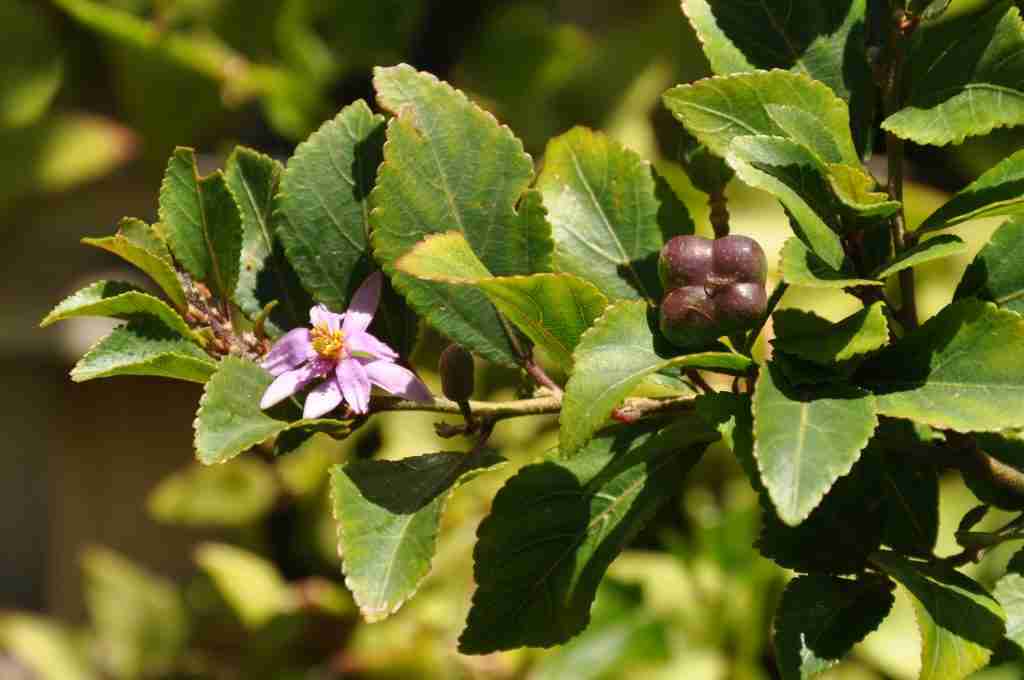In the autumn 2022 edition, Chris Viljoen introduced the Odyssey readers to five indigenous fruits, these plants may well be the new trend in health and conscious eating. They nourishing plants have an enormous potential when we consider the impact of climate change and food scarcity in Southern Africa. Ed
The importance of indigenous fruits is becoming more evident to me as I write these articles. Even with the exceptional plant diversity we are blessed with in our country, more and more of these species are coming under threat from invasive species and urban sprawling and, the most damaging, agriculture.
While I’ve been doing research, I found there is very little literature on most of the fruits or other edible species that I have been looking into. Apart from a few articles here and there, mostly on the traditional use of plants, there are very few studies on most of these plants.
It is becoming imperative that we start looking into our indigenous flora with a new eye, The value of these plants is only now coming to the fore but, unless we move quickly, we might lose some of these plants to climate change and other threats. Apart from being edible, most of these plants were also used for their medicinal properties and may still be of value today.
Rooibos, for instance, is marketed worldwide for its antioxidant properties and used in anything from skincare to exotic health drinks. If we can look at using our own biodiversity to produce the highly sought-after products we currently buy from other counties, we can open up a whole new market to help grow our economy and, rather than vast expanses of land growing high energy crops, build indigenous food forests, where we can grow in abundance, drought tolerant, pest tolerant, more resilient food crops.
Understanding and popularising these fruits again is how we will get to understand their full potential, how these fruits will become a part of our culture and our daily lives and will we be encouraged to take care of these valuable plants that lie hidden in our gardens and parks and last few vestiges of untouched land.
In this edition I chose to highlight some of our wild berries; there are, of course, many more and, hopefully, I will be able to share more of them in future.

Waterberry/umdoni (Syzygium cordalum)
Waterberry is an evergreen tree that grows to eight to 15 metres. You can find it growing near streams, on forest margins or in swampy spots. It is often thought that this tree’s presence indicates ground water. The leaves are elliptical and blue-green with a faintly paler green underneath. The young leaves have a reddish tinge. The white to pinkish flowers are borne in branched terminals, have numerous fluffy stamens and produce abundant nectar and fragrance.
From an ecological point of view these trees are of immense importance since, according to Palmer and Pitman (1972), one of the only two nesting sites of the Woolly-necked stork known in South Africa is in an umdoni swamp forest near Mtunzini. The foliage of this tree is eaten by kudu and birds such as the crowned hornbill feed off the large hairy caterpillars that sometimes infest the tree.
This tree is known for its many uses. The fleshy fruit are oval berries, red to dark-purple when ripe and are edible. The fruits have a sweet-sour taste and are slightly acidic. They are very high in vitamin C and other potent antioxidants. The berries can be used to make an alcoholic drink, to flavour vinegar and cordials or to make a delicious compote to serve with cheese and will pair well with green apple or starfruit.
The powdered bark is used as a fish poison, can be used to make a reddish-brown or orange die or as a remedy for stomach ache and diarrhoea. It is also used to treat respiratory ailments and tuberculosis.
The timber is very sought-after as it is very strong and hard but still flexible, with a beautiful grain. It is also fire resistant and could be useful with other plants as fire breakers.

Cross Berry (Grewia flora)
Cross berry is an attractive deciduous small tree shrub up to three metres high with a wide natural distribution. The leaves have three distinct veins from the base, are simple and alternate. They might be slightly hairy with a deep green colour. They are usually held in a horizontal plane towards the light. Purple, star-shaped flowers appear in summer.
Cross berry leaves can be used as feed for cattle, goats and game. The fruits are favoured by louries, mousebirds and barbets as well as certain mammals. Multiple insect larvae depend on this species.
The distinctive reddish-brown fruits look like little hot cross buns when ripe and may remain on the tree for quite a while. Where the sugar content of the fruits is high, they are collected and dried to be boiled in milk (Bushman smoothie) and cooked with maize for a sweet porridge and even to brew beer!
The cross-berry is an important species in traditional medicine and is used for a variety of purposes. Bruised bark soaked in hot water is used to treat wounds. Pounded bark, used regularly as a shampoo, was believed to prevent hair from turning grey. Parts of the plant were used to treat impotence and sterility and root extracts were used to help in childbirth.

Tortoise berry (Muraltia scoparia)
The tortoise berry can grow from from a willowy, erect shrub to a small tree of up to 2.5 metres. The slender green spine-like branches are finely divided, spreading and almost leafless at the tip. The alternately arranged small leaves are oblong to lanceolate, have a very short leaf stalk and look almost clutching. The apex is hooked and extends in a short spine. Pink to mauve flowers are arranged in many-flowered racemes. The showy flowers resemble pea flowers. The fruit is a fleshy drupe, white to green, gradually turning red and clutched by persistent mauve calyx lobes. There are one or two seeds.
This plant is remarkably ornamental in both the flowering as well as the fruiting stages, it would be an asset in horticulture. The plants flower abundantly and probably produce enough nectar to be advantageous to the honey industry. The edible fruits are important for sustainable use by birds and small animals.
The tortoise berry is quite astringent and a popular thirst-quenching snack rich in vitamin C. An infusion made with the leaves may treat colds and flu, the leaves and stem in a tea work like a bitter digestive, a general tonic for TB and abdominal pains.

Bietou/tick berry (Osteospermum moniliferum)
Bietou is a fast-growing semi-succulent up to two metres tall, with beautiful yellow daisy-like flowers. The foliage is greyish green, simple and alternatively arranged on smooth ascending stems that are fleshy at first, becoming woody. The flowers are borne on branch ends in groups of up to five. The blackish purple egg-shaped fruit is fleshy and sweet and up to six millimetres in diameter.
The plant occurs in full sun in well drained situations such as coastal dunes, hills, mountains (fynbos, or grassland) or rocky terrain, often part of a natural shrubbery or sometimes growing as a solitary individual. It is a pioneer, often appearing after fires. It will be useful to hold back dunes and repair overgrazed soil. Its semi-succulent nature makes it drought tolerant. It is pollinated by insects and bees find it particularly attractive. The fleshy fruits, appearing shortly after the flowers, are very popular among birds.
The berries are mainly used as a food source and a welcome treat on a hike. An infusion of the leaves can be used as an enema to treat fevers.
Chris Viljoen has a background in naturopathy and psychology, studies eastern philosophy as a Yogi and is a member of the Green Net, owner of Journey Café and Ghost Kitchen, a conscious food eatery, and manages a community garden focused on alleviating food insecurity on the South Coast with an emphasis on indigenous medicinal herbs and fruit.
https://thegreennet.org.za
https://m.facebook.com/healthyeatingvegetarianvegansouthcoast/
https://www.facebook.com/Ghost-Kitchen-South-Coast-107474935117210



